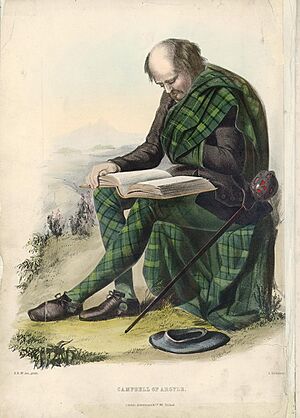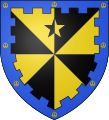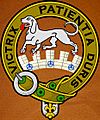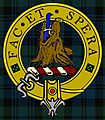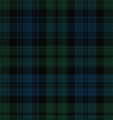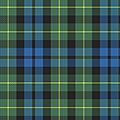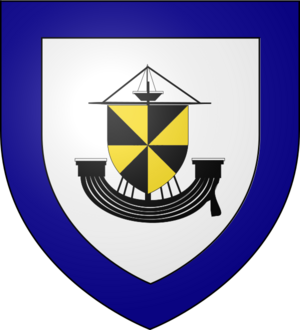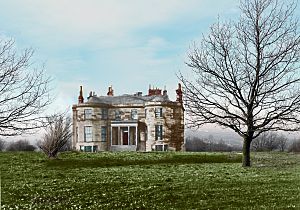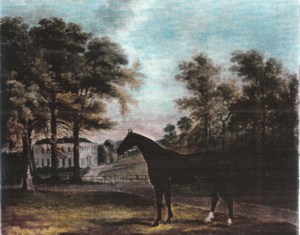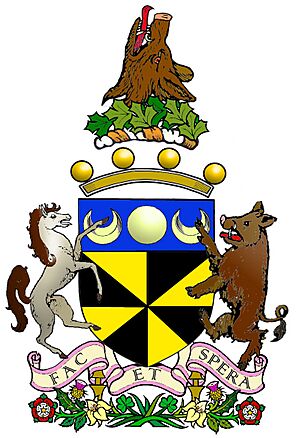Carter-Campbell of Possil facts for kids
Quick facts for kids Carter-Campbell of Possil |
|||
|---|---|---|---|
| Cairtear-Cambeulach | |||
| Motto | Fac et spera (Latin = Do and Hope) | ||
| War cry | Battle cry: Cruachan! | ||
| Profile | |||
| District | Castle Martin, County Kildare. Achnacroish and Ardrishaig, Argyllshire. Possil, Lanarkshire. Craigenputtock Dumfriesshire. | ||
| Plant badge | Shamrock and Bog Myrtle | ||
| Animal | Rampant Combatant Lions, Talbot and Wild Boar | ||
| Pipe music | "The Campbells are Coming" | ||
| Carter-Campbell of Possil has no chief, and is an armigerous clan | |||
|
|||
|
|||
|
|||
|
|||
| Cailean Donncath (Χ dar Possele) | |
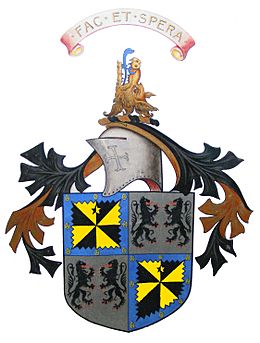
|
|
| has no chief, and is an armigerous clan | |
| Last head | |
| Seat | Craigenputtock |
|---|---|
| Historic seat | Possil |
| Last Chief | Lt. Col. Duncan Maclachlan Carter-Campbell of Possil OBE |

|
|
| Motto | Victrix Patientia Duris (Latin = Patience is victorious in hardship) |
|---|---|
| has no chief, and is an armigerous clan | |
The Carter-Campbell of Possil family is a special part of Clan Campbell, a large and important Scottish clan. They are also known as the Campbell of Possil. This family branch was historically based in Lawers and had strong ties to the Argyll area of Scotland.
The Carter-Campbell name comes from two famous families joining together. The Campbells of Possil were a Scottish family from Argyll. The Carters were an Irish family known for their role in politics in the 1700s. The name Carter-Campbell was first used in 1864 after a marriage.
Many Carter-Campbell family members have achieved great things. Some, like Duncan Carter-Campbell of Possil and George Carter-Campbell, held high positions in the British military.
Contents
Origins of the Carter-Campbell Family
The Campbells of Possil
The Campbells of Possil first came from Argyll, a region in western Scotland. This family is an offshoot of the Campbells of Kinloch and the Campbells of Murthlie. Both of these families originally came from the Campbells of Lawers.
Being in Argyll led to problems for the early Campbells. They had many fights with Clan MacDougall. One big fight was the Battle of Red Ford in 1294. In this battle, Sir Colin Campbell, one of the first known Campbells in Argyll, was killed. John MacDougall of Argyll led Clan MacDougall in this fight.
This battle caused many Campbell family branches to have long-lasting feuds with Clan MacDougall. Both clans were powerful in Argyll, which meant their conflicts continued for a long time.
The Campbells of Possil are directly related to Sir Colin Campbell of Glenorchy. He was a Scottish nobleman from the 1400s. During the Middle Ages, many Campbells became powerful in Scotland. This happened under King James II, King James III, and James IV of Scotland. Many Campbells became Earls of Argyll during these times.
The Carter Family
The Carter family started with Thomas Carter, an Irish Member of Parliament (MP). He was a politician who served in the Irish House of Commons. He was elected for Fethard and then for Portarlington.
His son, also named Thomas Carter, was born in 1690. He was the first to live at Castlemartin, which he bought in 1729. In 1731, he became the Master of the Rolls in Ireland, a high legal position. His second son, Henry Boyle Carter, took over Castlemartin after him. Henry was named after his father's friend, Speaker Boyle.
In 1750, Henry married Susanna Shaen. They had three sons and one daughter.
History of the Carter-Campbell Clan
Early Beginnings
Sir Colin Campbell of Glenorchy became the second Earl of Argyll in 1457. He took over from his grandfather, Duncan Campbell. In 1470, he became Lord Lorne. He became an earl because he supported King James II against the powerful Black Douglases family. Colin Campbell was the first of many Campbell earls. They remained Earls of Argyll until 1641.
17th Century Conflicts
The 1600s saw many big battles in Scotland, especially between 1644 and 1651. The Campbell of Possil family first got involved in a major way at the Battle of Inverlochy in 1645. During this time, Clan Campbell and Clan Lamont fought in many places across Scotland.
After the Battle of Inverlochy, Clan Lamont destroyed much of Clan Campbell's land. In response, Clan Campbell took Castle Toward and Castle Ascog from Clan Lamont. Clan Chief James Lamont gave up, and Clan Campbell burned both castles. This period of fighting is known as the Dunoon Massacre.
Between 1647 and 1698, Clan Campbell and Clan MacLean fought many battles in the Argyll area. Many Campbell of Possil ancestors lived there. In 1647, Clan Campbell members were defeated at Duart Castle by Royalist troops from Clan MacLean. In 1678, Archibald Campbell, 9th Earl of Argyll, invaded the Isle of Mull and took land from Clan MacLean.
Years later, in 1691, members of the Campbell of Possil family, along with Archibald Campbell, 1st Duke of Argyll, invaded Duart Castle. Sir John Maclean, 4th Baronet surrendered the castle. Clan Campbell then destroyed the castle. It later became part of the Torosay Castle estate. The castle remained a ruin until it was rebuilt in the 1800s.
19th Century and the Carter-Campbell Name
In the early 1800s, the Campbell of Possil family hired David Bryce to build Torosay Castle. The two land-owning families were the Carters of Castle Martin and the Campbells of Possil. The Carters owned land mainly in County Kildare, Ireland. The Campbells of Possil owned large areas of land in Lanarkshire, Scotland.
A marriage happened between Colonel Thomas Tupper Carter and Emily Georgina Campbell of Possil IV. She was the granddaughter of Colonel Alexander Campbell of Possil. After they married, their home was the Fascadale estate in Ardrishaig, Argyllshire. Emily Georgina Campbell of Possil IV wanted to keep her family name. This led to the creation of the Carter-Campbell name.
The Carter-Campbell family was formed in 1864 after this marriage. The family's Armorial Bearings (family crests) were combined. The Lord Lyon King of Arms in Scotland officially approved the Carter-Campbell of Possil Armorial Bearings.
In 1857, Thomas Tupper Carter joined the Royal Bengal Engineers. He became a first lieutenant in 1858. He served in the Sikkim Expedition in 1861 and commanded engineers in the Umbeyla Campaign in 1863. In 1864, he became a surveyor for the Great Trigonometric Survey of India. On September 15, 1864, he married Emily Georgina Campbell of Possil. She was the daughter of General George Campbell of Inverniell. After marrying, he took the new name Carter-Campbell of Possil.
Carter also served in the 1868 Expedition to Abyssinia. He was promoted to captain in 1870. He became a major in the Royal Engineers in 1877 and a lieutenant colonel in 1886. He retired in 1887 with the honorary rank of colonel.
He lived for a time at Siam House in Weymouth, Dorset. In 1893, he was given new arms by the Lord Lyon King of Arms. He officially changed his name to Carter-Campbell of Possil. He then lived with his family at Fascadale, in Ardrishaig, Argyllshire.
20th Century and Beyond
Colonel Thomas Tupper Carter-Campbell of Possil died at Fascadale on January 14, 1900, at age 61.
The family continued to have military connections. Carter had six children. His son George Carter-Campbell fought in World War I and became a major general. Another son, Duncan Carter-Campbell of Possil, was a British Army Colonel in the 1950s.
Clan Profile
Family Motto
The family motto is "Fac et Spera." This is Latin for "Do and Hope."
Notable Family Members
Here are some important people from the Carter-Campbell family:
| Portrait | Name | Birth | Death | Family | Known for |
|---|---|---|---|---|---|
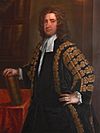 |
Thomas Carter | 1690 Hollybrook, Dublin, Ireland |
3 September 1763 Rathnally House, near Trim |
Unknown | Irish MP and first owner of Castlemartin |
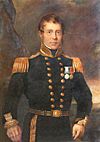 |
Admiral John Carter | 1785 Castlemartin |
2 April 1863 (aged 77–78) Devonport |
Son of Thomas Carter and Catherine Butler of Castlemartin | Officer in the Royal Navy |
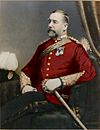 |
Colonel Thomas Tupper Carter-Campbell of Possil | 15 September 1838 | 14 January 1900 | Third son of Admiral John Carter RN of Castlemartin. Grandson of Thomas Carter MP. | British Soldier |
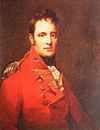 |
Colonel Alexander Campbell of Possil | Unknown | Unknown | Son of John Campbell (original owner of Possil Estates) | Appointed Colonel of the 7th West India Regiment in 1796. |
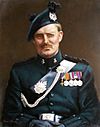 |
Duncan Carter-Campbell of Possil OBE | 1911 The Island of Malta |
1990 Dumfriesshire |
Son of George Carter-Campbell | British Army Colonel in the 1950s, received OBE award. |
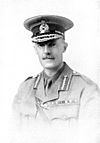 |
George Carter-Campbell | 1869 Edinburgh |
1921 (aged 51 or 52) London |
Son of Thomas Tupper Carter-Campbell of Possil | Became Major General in 1915. |
Family Crests and Coats of Arms
| GLENORCHY 1420 - 1556 |
LAWERS 1475 |
LAWERS 1475 - 1616 |
MURTHLIE 1525 |
KINLOCH 1600 - 1776 |
PARK 1750 - 1772 |
|---|---|---|---|---|---|
|
POSSIL 1780 -1809 |
POSSIL 1780 - 1892 (Lamont-Campbell) |
POSSIL 1780 - 1952 (Carter-Campbell) |
COLGRAIN 1800 - 186 |
COLGRAIN 1946 |
ESKAN 1960 - 1966 |
-
The coat of arms for Campbell of Possil, Lanarkshire, Scotland. Their motto is "Fac et Spera" (Do and Hope).
-
The coat of arms for Carter of Castle Martin (Castlemartin House and Estate), County Kildare, Ireland.
Family Tartans
Here are the tartans linked to the Carter-Campbell family:
-
The tartan of County Kildare
Family Estates
Torosay Castle, Isle of Mull
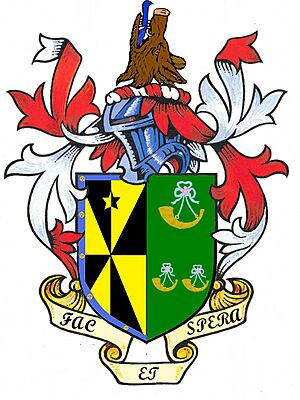
The architect David Bryce built Torosay Castle for John Campbell of Possil. It was built in the Scottish Baronial style and finished in 1858.
Seven years later, in 1865, John Campbell sold the castle to a rich businessman named Arburthnot Charles Guthrie. The castle is now known as the home for Clan Guthrie.
John Campbell of Possil, also called "The Dragoon," was the son of Colonel Alexander Campbell of Possil. He bought the Torosay estate from his father in 1858 and hired David Bryce to build the castle. The Campbell of Possil family crests are carved into the stone walls of the castle.
The Carter-Campbell family sold Torosay Castle in 1865. John Campbell of Possil sold it to Arburthnot Charles Guthrie, a wealthy London businessman. Torosay Castle is still standing today. In 2008, a very old and valuable bottle of Veuve Clicquot champagne was found there. It is now on display at the Veuve Clicquot visitor center in Reims, France.
Duart Castle
Duart Castle was built in the 1200s and belonged to Clan MacLean. In 1350, Lachlan Lubanach Maclean of Duart received the castle as part of her marriage dowry. Clan Campbell first attacked the castle in 1647. Archibald Campbell, 9th Earl of Argyll finally captured it in 1691. The castle was then destroyed and left in ruins. Large stones from the castle were used by Donald Maclean, 5th Laird of Torloisk to build a small house nearby. By 1751, the castle was abandoned and became part of the Torosay Castle estate.
Later, descendants of Archibald Campbell, 1st Duke of Argyll sold the castle in 1801. It was bought by Clan MacQuarrie. Then, it was sold to the Carter-Campbell of Possil family, who kept it as a ruin within the Torosay estate. When the estate was sold again, the castle ruin was bought by Sir Fitzroy Donald Maclean and restored.
Possil Estate
A part of the Possil area, called Nether Possil, was bought by Robert Crawford in 1595. Over time, the estate was sold to different wealthy Scottish families. In 1697, the writer John Forbes built a house there. In 1808, Colonel Alexander Campbell bought the estate. He was the son of John Campbell senior, a merchant from Glasgow who started a trading company. Colonel Campbell had fought in battles in South Africa, including the capture of the Cape of Good Hope in 1806. He also commanded the 20th Regiment at the Battle of Corunna.
In 1838, he bought the nearby estate of Keppoch, and the family moved their main home there. Campbell rented Possil house and a park to Sir Archibald Alison, 1st Baronet. Sir Archibald was a lawyer and became the Sheriff of Lanarkshire in 1834.
The house and parts of the estate later became the Possilpark area of Glasgow.
Clan Campbell of Possil Family Mausoleum
The Clan Campbell of Possil has a family mausoleum, which is a special burial place. It is located in the parkland of Torosay Castle. Several family members were buried there after the Torosay Estate was bought in 1808.
- Colonel Alexander Campbell of Possil was the first person buried there. He decided to build the mausoleum after buying the estate in 1808.
- Harriet Maclachlan, who married Alexander Campbell of Possil, was also buried there. She was from Clan Maclachlan and was the daughter of Donald Maclachlan.
- Mrs Alexander Campbell of Possil, born Harriet Maclachan of Castle Lachlan, Argyll (painted by Sir Henry Raeburn).
- John Campbell of Possil Esq. and of Torosay Castle (Duart House), The Achnacroish Estate, Isle of Mull, and his three wives: Elizabeth Campbell of Ballimore, Helen Bogle Campbell of Colgrain, and Elizabeth, daughter of Donald Horne W.S.



